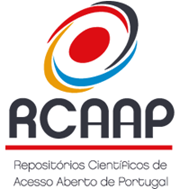Avaliação dos Efeitos Ocorridos Com a Reabertura da Linha Férrea Beira-Moatize nas Empresas: O Caso dos Transportes Carlos Mesquita
DOI:
https://doi.org/10.25746/ruiips.v10.i2.29066Palavras-chave:
Moçambique, Reabertura da Linha Férrea, Transporte Rodoviário, TCMResumo
O presente artigo procura avaliar os potenciais efeitos da reabertura da linha férrea Beira-Moatize nos transportes rodoviários, especificamente nos Transporte Carlos Mesquita (TCM). Para a concretização do estudo, foram aplicadas diversas tipologias de pesquisa que facilitaram na obtenção dos resultados, dos quais se destacam a pesquisa qualitativa e exploratória, e uso da técnica de entrevista. Como resultados, constatou-se que a reabertura da linha férrea não impactou significativamente a situação financeira dos TCM, dado nível de fidelização dos seus clientes. Por outro lado, registou-se uma redução no volume de carga manuseada logo após a reabertura, que com o passar do tempo foi-se estabilizando, principalmente pela flexibilidade apresentada pelo transporte rodoviário no tempo de entrega, em relação ao ferroviário. A principal variável que afectou a performance dos TCM, foi o preço praticado pelos Caminhos de Ferro de Moçambique (CFM), que era inferior ao praticado pelas transportadoras rodoviárias, principalmente devido às economias de escala geradas pelo elevado volume de carga transportado. A procura pelos serviços ferroviários afectou o volume de vendas da TCM, gerando uma tendência decrescente no fluxo financeiro. Como recomendação, as empresas de transporte rodoviário, devem procurar por mercados, que os transportes ferroviários não tenham ainda fixado como destino, ou em que o tempo de entrega seja mais elevado em relação ao rodoviário. Por outro lado, a inovação, e a busca de alternativas no tipo de carga movimentada pode fazer a diferença entre estas duas modalidades de transporte, fazendo a diferença na competitividade entre ambas as modalidades.
Downloads
Publicado
Como Citar
Edição
Secção
Licença
Direitos de Autor (c) 2022 Paulo Saene, Imraan Bahadur

Este trabalho encontra-se publicado com a Licença Internacional Creative Commons Atribuição-NãoComercial-SemDerivações 4.0.
Autores que publicam nesta revista concordam com os seguintes termos:
- Autores conservam os direitos de autor e concedem à revista o direito de primeira publicação, com o artigo simultaneamente licenciado sob a Licença Creative Commons Attribution que permite a partilha do trabalho com reconhecimento da autoria e publicação inicial nesta revista.
- Autores têm autorização para assumir contratos adicionais separadamente, para distribuição não-exclusiva da versão do artigo publicado nesta revista (ex.: publicar em repositório institucional ou como capítulo de livro), com reconhecimento de autoria e publicação inicial nesta revista.
- Autores têm permissão e são estimulados a publicar e distribuir o seu trabalho online (ex.: em repositórios institucionais ou na sua página pessoal) a qualquer ponto antes ou durante o processo editorial, já que isso pode gerar alterações produtivas, bem como aumentar o impacto e a citação do trabalho publicado.





